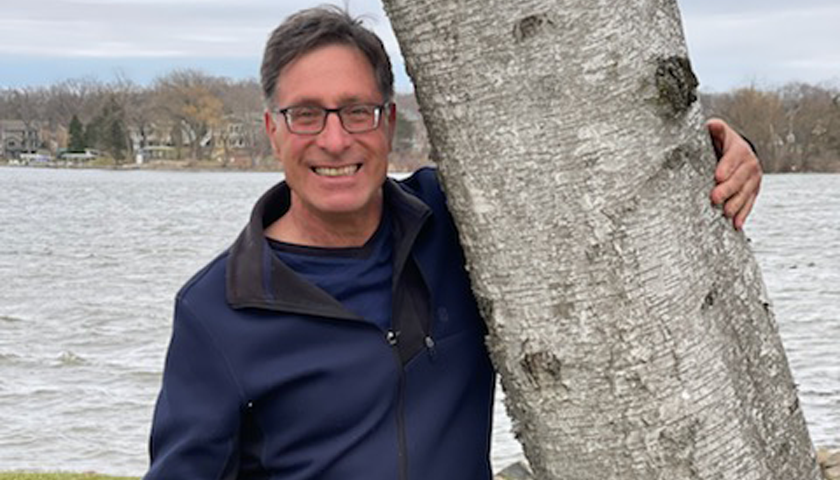What better way to observe Arbor Day than with a few questions for a tree guy…
John Bernacchi has been a tree guy for most of his adult life. With Arbor Day upon us we thought this would be as good a time as any to ask him a few questions about trees, specifically trees found in our area.
Q. How and when did you get started in the tree business?
A. My sister and brother-in-law started at Matt’s Tree Service back in the mid-60’s. We worked for them during the summers while in high school. In 1987, we bought the business from them and changed the name to Lakeside Tree Care.
Q. We understand that you recently sold your business, who is taking over?
A. Thirty-four years later I have been lucky to find a great company that shares my values and will take care of my client list. Lakeside Tree Care is merging with Hoppe Tree Service of Milwaukee. The two brothers August and Fred Hoppe are a great fit. Their Dad started service fifty years ago!
I will be staying on untill the end of the year so I will still be the contact for all my old customers and help them with the transition. Please contact me. 262-654-8050 or request a quote on the website lakesidetree-disposal.com, or Hoppe Tree Service at 414-257-2111.
Q. In your many years in business have you ever felt conflicted about removing healthy trees at the request of a customer?
A. Some times customers might think their trees are in decline, dying, or pose a threat to home property or the building foundation. Over the years, I have been able to help with tree health and risk evaluation, hopefully saving many trees.

Q. In recent years, our area has been hit hard by insect infestation, specifically the emerald ash borer. It has been directly responsible for the loss of so many trees. Do you have an estimate as to how many trees were lost?
A. The emerald ash borer has been devastating to Kenosha and ultimately to all of northern Illinois and Wisconsin. Unless you start treating the tree as a preventative 10-12 years ago, you will ultimately lose your ash tree to this infestation.
Lakeside Tree Care/Hoppe Tree Service has taken down tens of thousands of trees. My estimate is that 80%-90% of Ash trees in the state will be lost.
The city of Milwaukee was very aggressive early in treatment for their street trees and have faired much better with survival than most communities.
Q. Many years ago, it was Dutch elm disease that felled so many area trees. Could there be another insect infestation on the horizon?
A. Back in the 60’s and 70’s, Dutch elm disease destroyed almost all of the American elms in the east and midwest. There will always be pressure from invasive species, but nothing on the horizon like the emerald ash borer or Dutch elm disease.
Q. A new study specifically identified both Milwaukee and Chicago as hot spots with a high concentration of dead trees primarily due to the emerald ash borer. Were emerald ash trees popular everywhere or is that a regional thing?
A. It would be easy to say that ash trees were over planted making the problem worse. They were a great choice for residential and commercial planting and popular all over the midwest.
No one saw this coming.
Q. Have you heard or been aware of a threat of any infestation from some other insect species?
A. Gratefully, I have not heard of anything this destructive on the horizon. Let hope it stays that way.
Q. Is there a specific variety of tree that you recommend for our area of the country?
A. People ask all the time, “What tree would you recommend?” The decision on the type of tree is relative to desired projected height, branch structure, desired shade, or fall color. We are always happy to help customers with that decision so give use a call.
Q. If someone asked you what are the benefits of planting a tree what would be your response?
A. Everybody knows the benefit of urban trees. From air quality to the shade they provide. They add so much to our urban landscape.Something people might not realize is the effect trees can have on heating and cooling bills. Something to consider when planting or removing.
Q. Can you tell us what type of trees you have on your property?
A. Some of my favorite trees are purple leaf ash and river birch, for it’s interesting bark, and just about any tree that has vibrant fall color.
Q&A by Frank Carmichael
(This article first appeared in the 4/21/22 issue of the Smart Reader)

Insects could kill 1.4 million trees in U.S. cities including Milwaukee and Chicago
Invasive insects could kill 1.4 million trees by 2050 in cities across the United States, which could cost more than $900 million to replace, according to a new study. The study, published in the British Ecological Society’s Journal of Applied Ecology, used data from around 30,000 urban areas across the country to create the forecast and recommend that cities take steps to plant a variety of trees rather than trees from a single species.
“These results can hopefully provide a cautionary tale against planting a single species of tree throughout entire cities, as has been done with ash trees in North America,” Emma Hudgins, the study’s lead author, said in a press release.
“Increasing urban tree diversity provides resilience against pest infestations. While we know this more intuitively for monocultures of crops, many cities continue to plant what are essentially monoculture urban forests.”
The emerald ash borer, a green jewel beetle native to northeast Asia, is projected to kill nearly all ash trees in more than 6,000 urban areas. The beetle, which lays eggs and feeds under the bark of the ash trees, is expected to cause 90% of the 1.4 million urban tree deaths projected in the study.
The U.S. Department of Agriculture and state agencies have long struggled to fight the invasive species, which has already killed millions of ash trees across North America.
The new study found that the death of urban trees will be concentrated into “hot spot” cities that include New York, Chicago and Milwaukee, which have high numbers of ash trees and have been introduced to the emerald ash borer or are in its path.
Researchers also examined the potential impacts of other insect species that have not arrived in the United States. The study found that wood-boring insects from Asia, such as the citrus long-horned beetle, could cost the United States as much as $4.9 billion by 2050 if they are introduced in the country.
“This paper shows that unless we plant a variety of tree species in our cities, urban trees are seriously at risk from invasive pests,” said Jane Memmott, an ecologist and entomologist at the University of Bristol, who was not a part of the study.
Arbor Day 2022 is April 29th
This year we celebrate Arbor Day on April 29. However if you want trace back the roots of this event (no pun intended) you would have to go back in time, specifically April 10, 1872. Originated by J. Sterling Morton of Nebraska City, Nebraska, it was on this date that an estimated one million trees were planted in the corn busker state.
However it wasn’t until April 15, 1907 when Theodore Roosevelt issued an Arbor Day proclamation that the movement gained significant traction.
Today in association with the National Arbor Day Foundation there are over 3,400 tree cities in the USA including Racine and Kenosha. For a city to participate it must have established either a tree board or department, and an ordinance in place for tree care. It must also have in place a community forestry program with an annual budget of at least $2 per capita.



